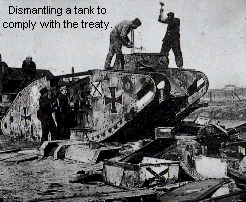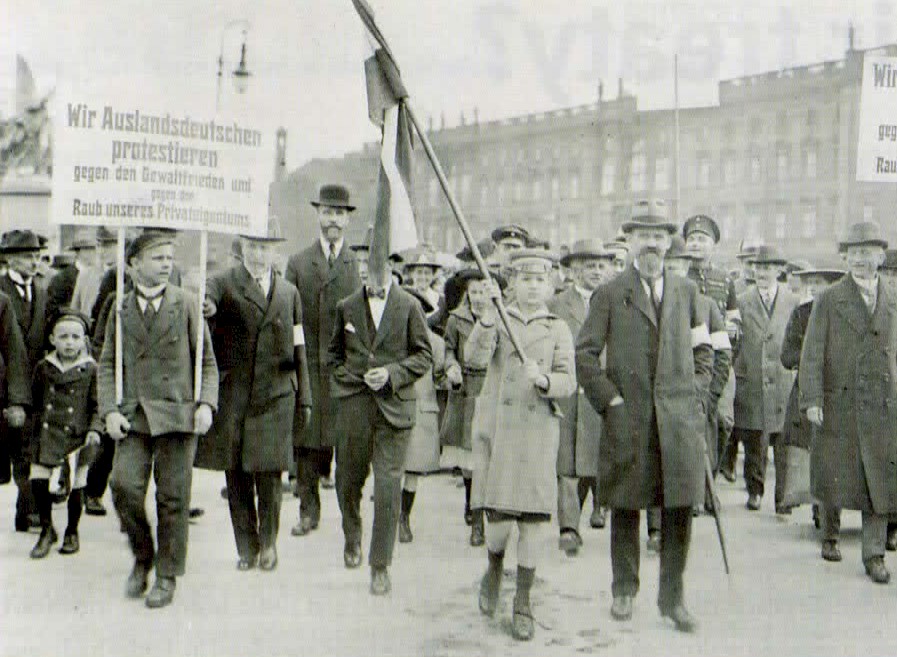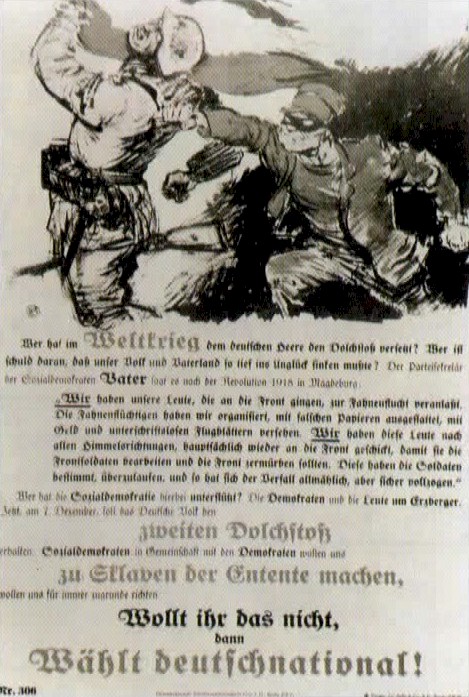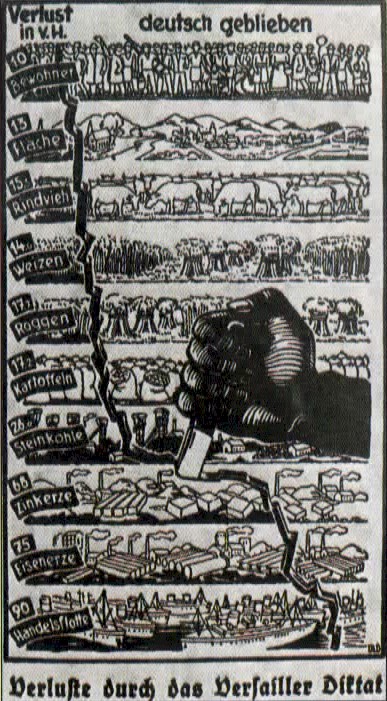|

| |
| |
|
Implementation
of the Treaty of Versailles
|
| in
Germany |
|
1918
- The Armistice
On the 11
November 1918 the Germans signed an armistice to agree to stop fighting
while the treaty was written. This was the day that the First World War
ended.
At the time of
the signing of the armistice, the Germans thought that the treaty would
be based on President Wilson of the USA's Fourteen Points which included
a number of fair and democratic ideas. This is what the Germans thought
the treaty would be, fair and democratic. |
|
1919
- The Paris Peace Conference
The
writing of the treaty was done at a conference in Versailles, Paris in
January 1919. Nearly every major state was present, except, however, for
Germany. The country of which this treaty would decide the fate of was
not present and had no say in what was to happen. They weren't even told
what was going on in Versailles. And, because of lack of information,
the Germans continued to think that the treaty was going to be a fair
one, based on Wilson's Fourteen Points.
On
7 May 1919 their hopes were destroyed when the completed treaty was put
before the German Government. The treaty they had been given was a lot
harsher than they though it would be. |
|
The
terms of the treaty
Only
the first part of the treaty was based on Woodrow Wilson's (US
President) Fourteen Points. This involved the creation of a world
peace-keeping organisation called the League of Nations. The aim of the
rest of the treaty was just to weaken Germany so that she could never
fight another war.
The
treaty took over 70 000 square kilometres of Germany's land and gave it
to nearby countries. As well as land in Europe, the treaty also took all
of Germany's colonies overseas. It severely reduced the size of her army
and navy, forbidding them from having tanks or
submarines; and scrapped her whole air force. Allied troops were to
occupy all parts of Germany to the west of the river Rhine and German
forces were not allowed within 50 kilometres of that area. them from having tanks or
submarines; and scrapped her whole air force. Allied troops were to
occupy all parts of Germany to the west of the river Rhine and German
forces were not allowed within 50 kilometres of that area.
Finally,
clause 231 of the treaty demanded that Germany take full responsibility
for starting the war and for causing all the Allies' loss and damage. It
ordered Germany to pay 132 billion German marks (£6 600 million) in
reparations to the Allies, the cost of repairing the damage from the
war.
click
here to see a brief video on some of the terms of the treaty
|
|

German
reactions to the treaty
The
people of Germany were outraged by the treaty. nothing but protest
greeted the treaty. Mass demonstration took place against it. Places of
amusement closed down and a period of mourning began.
The
German government protested angrily but were not able to get the Allies
to change the treaty. The Allies gave them five days in which to accept
the treaty and if they refused to do so, they said they would invade
Germany.
Many
Germans would have preferred to fight the Allies than sign the treaty
but if they tried to fight, they would be sure to lose because of state
of her armed forces. Reluctantly, the German parliament voted to accept
the treaty. On 28 June, two government officials went to the palace of
Versailles, near Paris and signed the treaty.
|
|
Why
did the Germans hate the Treaty?
Germans
hated the treaty so much for three main reasons:
-
But
more than anything else, the Germans believed they had not actually
lost the war. They believed that the socialist politicians who made
peace by signing the armistice in November 1918 had betrayed
Germany. People called them the 'November Criminals' and said that
they had 'stabbed the army in the back'. By this they meant that the
army could have won the war if if the socialists had not made peace
in 1918.

This
poster accuses the
Social
Democratic Party
of
stabbing the German
army
in the back.

This
is a picture from a German school
book
in 1933. It shows all the German
losses
of people, land, cattle, wheat, rye,
potatoes,
coal-mines, zinc, iron ore and merchant ships.
|
| |

|

